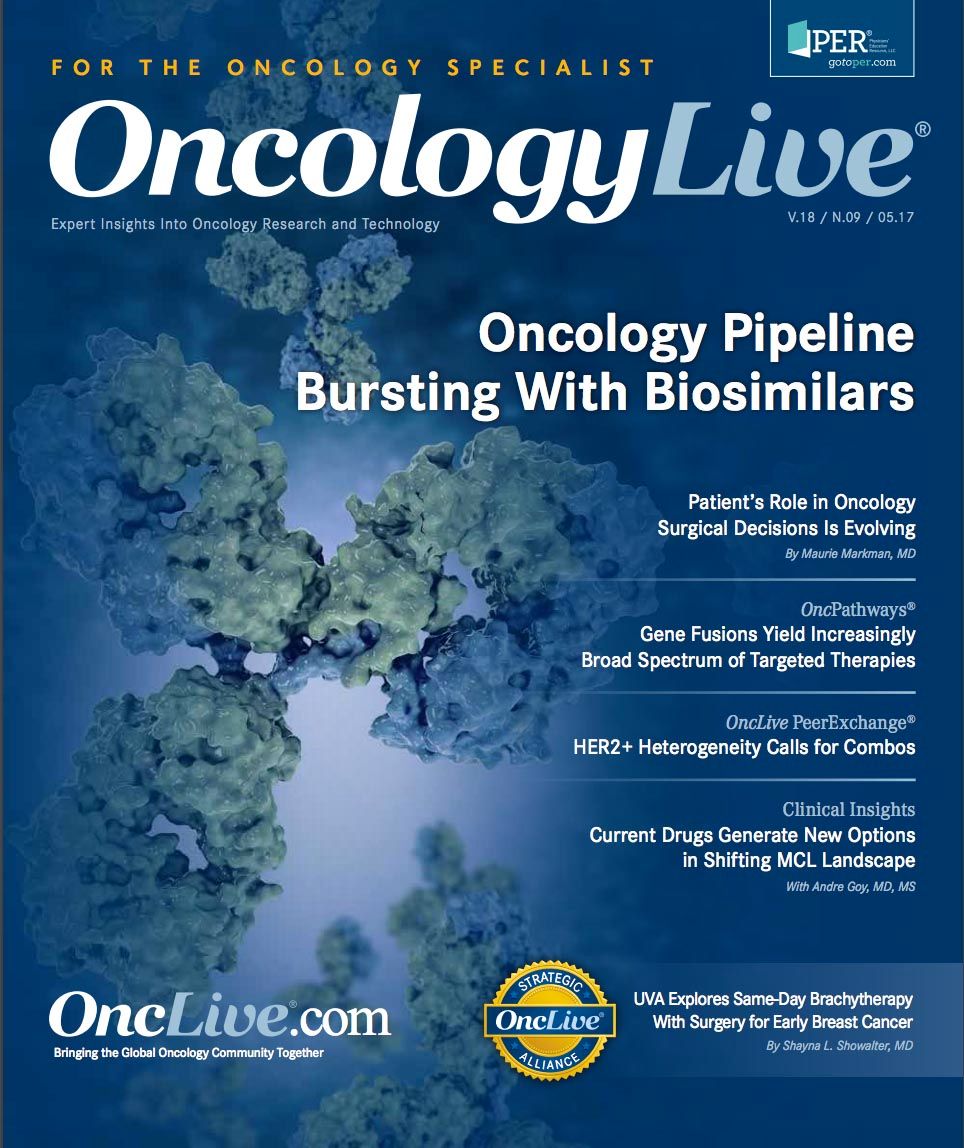Publication
Article
Oncology Live®
Biosimilar Era Arrives
Author(s):
Although biosimilar versions of branded medicines have been proliferating in other parts of the world for more than a decade, we’re still getting accustomed to the introduction of these new therapeutic options in the United States.
OncLive Chairman,
Mike Hennessy
Although biosimilar versions of branded medicines have been proliferating in other parts of the world for more than a decade, we’re still getting accustomed to the introduction of these new therapeutic options in the United States. Now it looks like the learning curve will be getting steeper while the time for mastering new concepts related to these drugs grows shorter.
The rapid pace of biosimilar development in the oncology arena is captured in “Oncology Pipeline Bursting With Biosimilars,” our cover story in this issue of OncologyLive®. Pharmaceutical developers are scrambling to create biosimilars of the most widely used anticancer therapies. There are pending applications for biosimilar versions of trastuzumab and bevacizumab and plans are in the works for more filings in the near future.
This growth is happening at a time when debate is continuing about vital issues such as whether a biosimilar medicine is truly interchangeable with the reference product and court battles ensue over patent protections for the companies that have invested resources into ensuring the efficacy and safety of these drugs.
For clinicians, there is much to consider. Biologics are among the most complicated therapeutics scientists have ever created so the first factor that must be considered is whether a new version is “highly similar” to the original including whether it will produce the same outcomes as safely and effectively as the reference product. Another thorny question is whether a biosimilar evaluated in 1 indication can be approved in other disease settings for which the original drug was tested in separate clinical trials.
In January, Michael J. Hennessy Associates, Inc, which publishes OncologyLive®, launched The Center for Biosimilars at www.centerforbiosimilars.com, a unique resource that provides wide-ranging coverage of the many facets of this developing industry. The site provides clinical, regulatory, and economic information about biosimilars from oncology specialists, public health experts, and market analysts.
There will be many opportunities to explore emerging issues as we move forward into this new aspect of cancer care. We hope you find the information we provide about these therapies helpful in your daily practice. As always, thank you for reading.


























%20(2)%201-Recovered-Recovered-Recovered-Recovered-Recovered-Recovered-Recovered-Recovered-Recovered-Recovered-Recovered-Recovered-Recovered-Recovered-Recovered-Recovered-Recovered.jpg?fit=crop&auto=format)
%20(2)%201-Recovered-Recovered-Recovered-Recovered-Recovered-Recovered-Recovered-Recovered-Recovered-Recovered-Recovered-Recovered-Recovered-Recovered-Recovered-Recovered-Recovered.jpg?fit=crop&auto=format)
